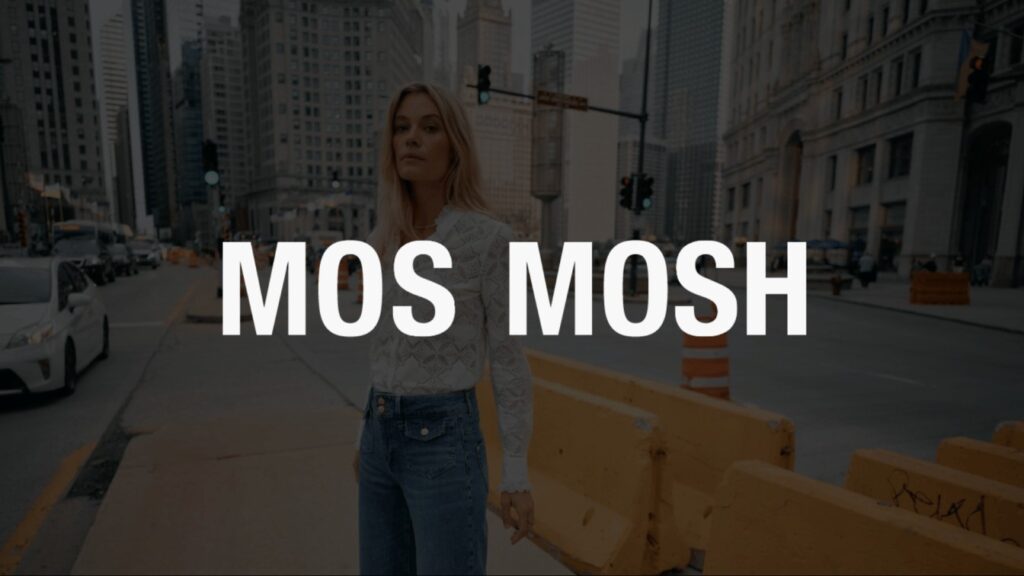Mos Mosh is not a typical e-commerce brand. Known for its elevated wardrobe staples and high-quality craftsmanship, the Danish fashion label doesn’t just sell clothes. It builds trust with customers through consistency, responsible design, and a premium experience from click to checkout.
When their Shopify agency Grafikr introduced Mouseflow to their optimization toolkit, the goal wasn’t to squeeze more out of short-term performance. It was to make confident decisions rooted in real behavior. Not assumptions.
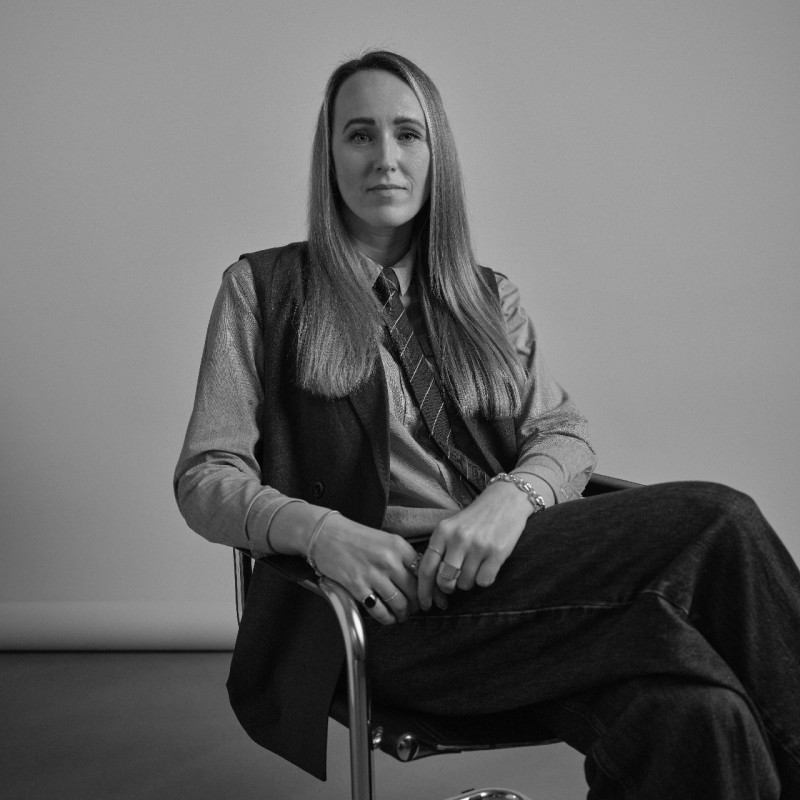
By integrating Mouseflow’s behavior analytics tool into our development projects, we ensure that our website delivers a consistent brand experience and strong UX for our customers. This enables us to make data-driven development decisions that uphold the quality of our premium brand universe—without compromising a seamless customer journey.
The challenge: Bring clarity to design conversations
Over time, the Mos Mosh team launched significant updates to their online store. Product pages were redesigned. A new collection page was introduced. But every change opened the door to discussion. Multiple stakeholders brought valuable ideas to the table, but there wasn’t always alignment on what the user needed most.
The challenge wasn’t technical. It was strategic. How could the team agree on changes without guessing?
Grafikr used tools like Mouseflow’s Session Replay and Heatmaps to remove subjectivity and give everyone a shared, trustworthy view into how users were actually moving through the site.
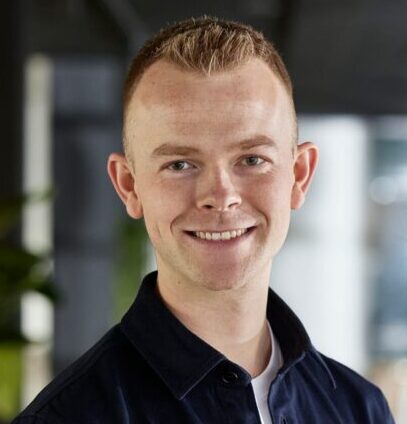
We weren’t looking to collect more data. We needed clarity. Mouseflow helped us identify exactly where decisions needed to be made.
The solution: Real behavior that simplifies decision-making
Using Mouseflow, Grafikr tracked scroll patterns, clicks, friction points, and session replays. They focused on touchpoints where customer behavior was especially important, such as navigation, filters, and product selection.
And here’s what they found with Mouseflow:
Filters became the unsung hero of conversions
Mouseflow revealed a standout insight. Users who engaged with filters converted far more frequently than those who didn’t.
This behavior mirrored industry research showing that filtered users are up to 2.5 times more likely to convert. In response, Grafikr made targeted updates:
- They added more filter categories, including material, fit, and ethical certifications.
- They reordered filters based on heatmap data, moving the most-used options to the top.
- On mobile, they simplified the filter interface to minimize visual noise.
These changes made the experience smoother for the brand’s core audience, which includes women over 50 who expect a site that is intuitive and easy to navigate.
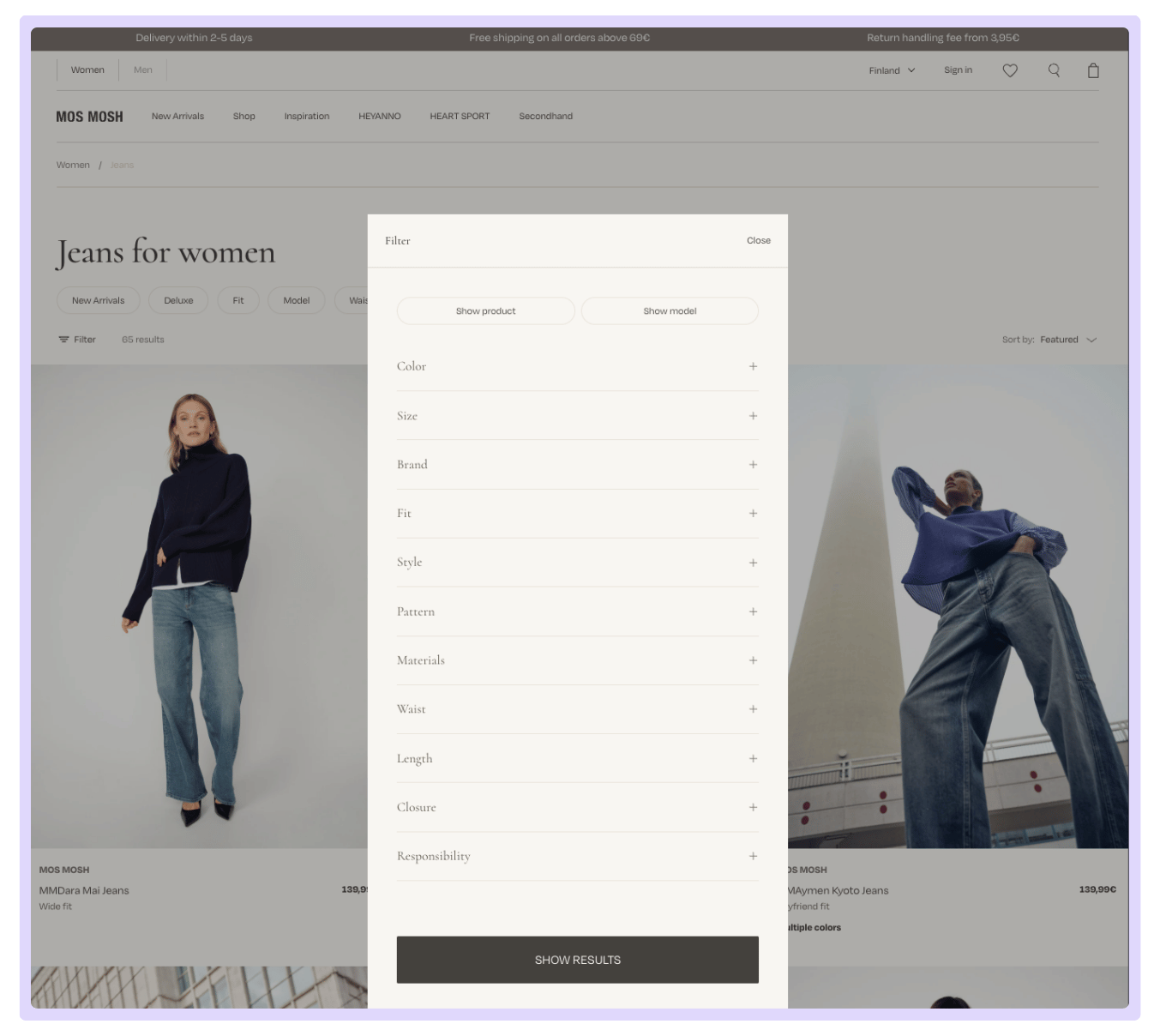
Active Filter Overlay on Mos Mosh’s Product Listing Page
Customer behavior wasn’t one-size-fits-all
Mouseflow not only helped identify what features to adjust. It also surfaced meaningful differences in how Mos Mosh’s shoppers behave. Erik mentioned that, “We saw these content spots get more clicks, especially when the full look was displayed across the screen”.
For example, women shoppers responded more to styling cues. Content blocks that featured full outfits, what Grafikr calls “content spots”, performed better on mobile, where they took up more screen space and encouraged engagement. (See example below)
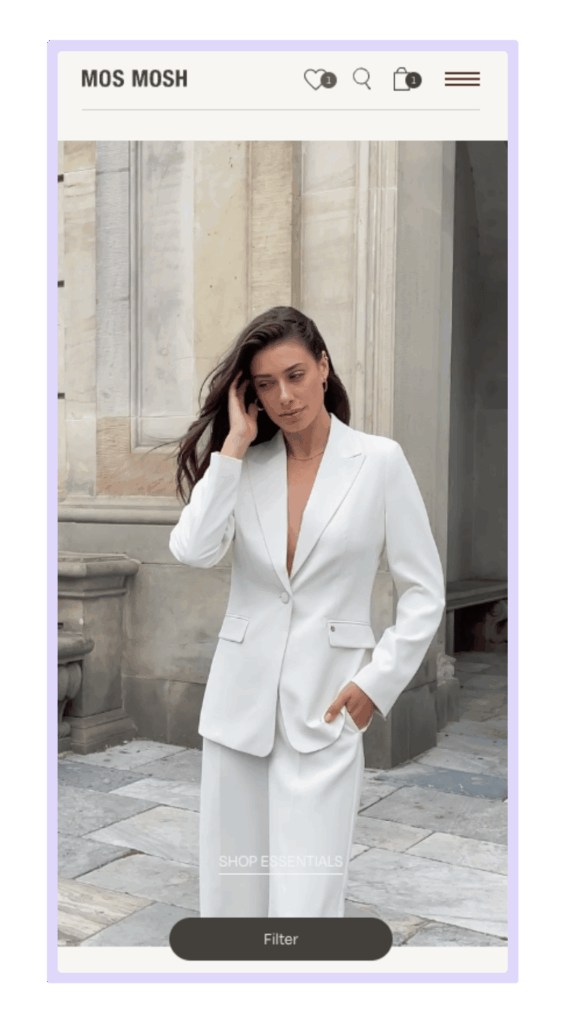
Mos Mosh Mobile PLP Content Spot (Video)
The team reinforced this with layout adjustments. Products were shown with both front and back imagery to help shoppers evaluate details without clicking through.
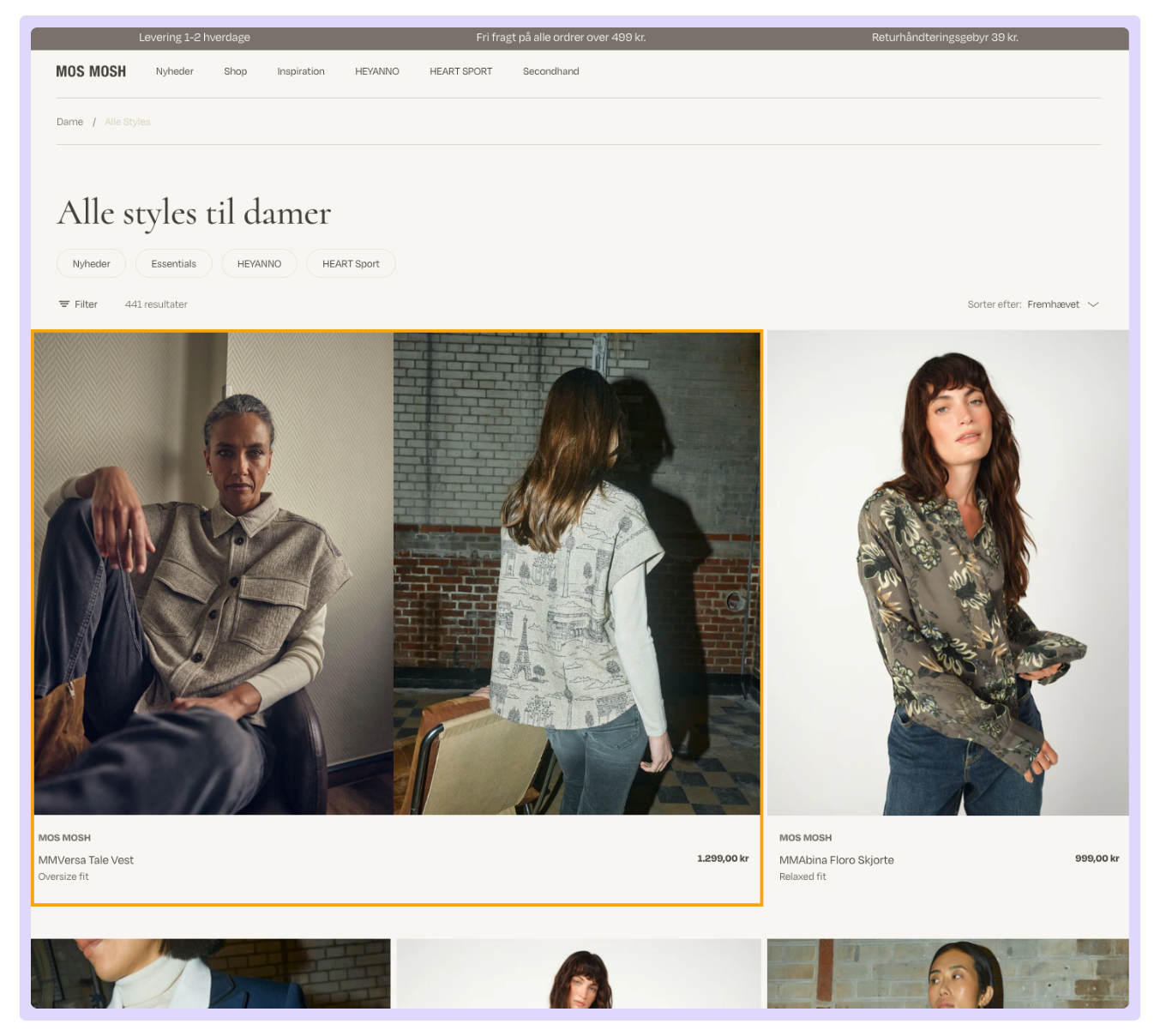
Double-Sized Product on Women’s Collection Page. This double-sized product highlights both front and back details, occupying two columns. The larger display increases visibility and click rates.
On the other hand, men’s behavior was more direct, “If they liked a white T-shirt last time, they’d just come back to buy that same white T-shirt. They don’t browse for inspiration in the same way.”, according to Erik.
These insights helped refine merchandising and content placement by segment. More filters, faster access to preferred categories, and less emphasis on visual storytelling for male shoppers all contributed to a better-tailored experience.

Instead of debating, we were watching real sessions together, it helped everyone understand what was working and what needed fixing.
Mouseflow became a communication tool
Mouseflow didn’t just help improve the experience. It helped align the team. Before, decisions were often based on preference or gut feel. After Mouseflow, the team could bring actual recordings and click data into meetings. Designers, marketers, and brand leads could all see the same behavior and agree on a path forward.
Results
With Mouseflow insights, Grafikr and Mos Mosh made improvements that supported both performance and brand integrity. These included:
- Increased interaction with filters, especially on mobile
- Higher engagement with wishlist functionality
- More intuitive navigation and reduced user friction
- Faster decision-making across design and marketing teams
- A digital journey that felt more natural and consistent
- Lower friction score
These were not one-size-fits-all CRO tactics. They were brand-aligned improvements that respected the pace and expectations of Mos M

Mos Mosh isn’t chasing quick wins; everything they do has to feel right in their heart. That includes how their digital experience feels.
Mos Mosh doesn’t rely on urgent popups or deep discounts. Their ecommerce strategy is about creating a calm, confident space for customers to browse. That means any optimizations need to reinforce trust, not break it.
With Mouseflow, Grafikr helped Mos Mosh move beyond assumptions and towards clarity—every update was based on real interactions and real context. “It’s easy to overdesign; Mouseflow helped us stay simple and stay focused on the user,” explains Erik.
About Grafikr
Grafikr is the only Shopify Premier Partner in Denmark. They specialize in ecommerce design, development, and optimization for lifestyle and fashion brands. Their work spans UX strategy, full-site redesigns, CRO, custom integrations, and analytics. Grafikr’s client roster includes brands like RAINS, Mos Mosh, Skechers, Bahne, Shaping New Tomorrow, and Skall Studio.
Mouseflow is a critical part of their approach, helping teams validate ideas, align stakeholders, and continuously improve digital experiences without losing sight of what makes a brand distinct.
Company: Grafikr and Mos Mosh
Tools used: Mouseflow, Shopify, Google Tag Manager
Features used in Mouseflow: Session Replay, Custom Tags / User Segments, Heatmaps, Funnels, Friction Score
